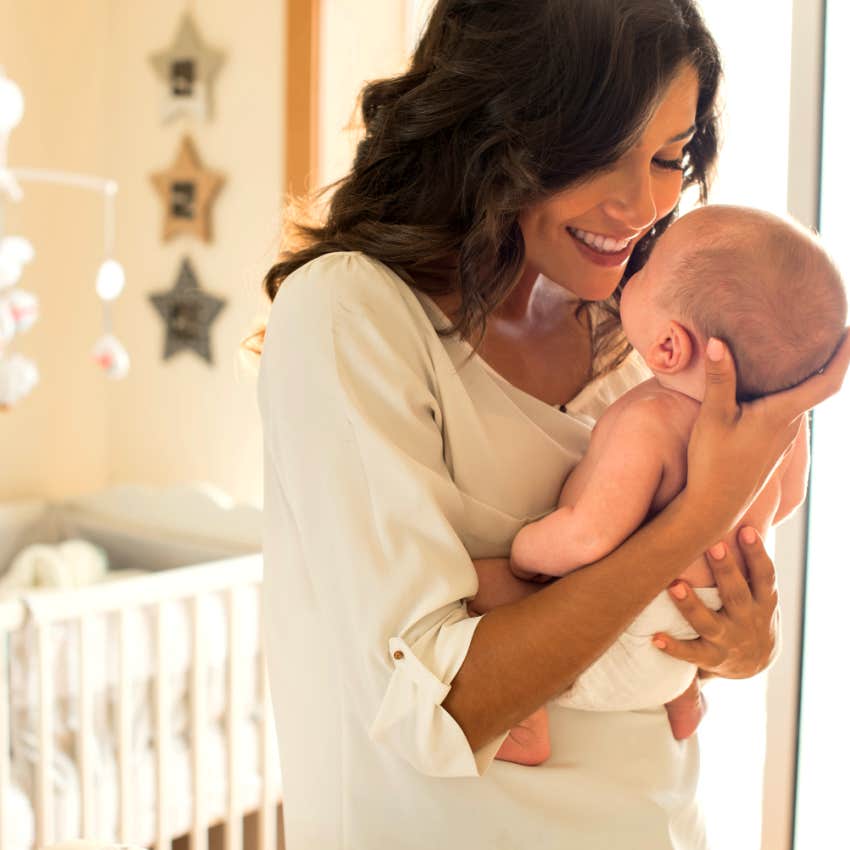Did you know that 80% of the human brain develops before the age of three? According to attachment therapist Eli Harwood, our babies undergo rapid development during these earlier years.
So, what steps can we take to ensure they develop secure attachments as they grow older? Harwood offers three tips that every parent should consider.
3 Things All Babies Need To Form Secure Attachments As Adults
1. Close proximity to their caregivers
According to Harwood, babies need to be held and coddled during this development stage. She says, “When we prioritize physical touch we assure our babies that they’re safe and secure.”
 Photo: Trendsetter Images / Shutterstock
Photo: Trendsetter Images / Shutterstock
When your baby feels safe they can better focus on their developmental stages as opposed to their basic survival instincts.
Developmental and behavioral pediatrician Dr. Mary Beth Steinfeld adds to this conversation, writing,” Babies who are held and comforted when they need it during the first six months of life tend to be more secure and confident as toddlers and older children.”
And it’s not just mothers who need to hold their babies — fathers and siblings do too. So, nuzzle your baby and let them know that they’re safe and protected.
2. Movement
Do you ever get the urge to rock your baby? Harwood explains that this urge is engrained to help our baby’s development.
Rocking our baby helps develop their vestibular sense. “This can impact both their balance and spatial orientation,” says Harwood. Movement also helps simulate the womb, which can be calming for a crying newborn.
According to the Raising Children Network, the movement also helps strengthen the neck and upper body. So, if you have a newborn try incorporating tummy time into their routine.
They write, “Tummy time is time your baby spends on their stomach while they’re awake.” Incorporating tummy time helps develop their rolling, crawling, and walking skills. However, it’s important to note that your baby may have a hard time adapting.
The Raising Children Network explains that tummy time can be stressful as your baby can’t see your face. They also warn parents that throwing up is normal when starting tummy time. So, what can we do?
Try placing the baby on your chest for tummy time. If not then get on the floor with your baby, preferably on a carpet. Do tummy time for 1-2 minutes then slowly increase to 10-15 minutes when they adjust.
“Do this several times a day to help with their development,” writes the Raising Children Network.
3. Mirroring
Mirroring is crucial for child development. According to Harwood, mirroring is when you reflect your child’s emotions back to them. But why is this important?
Mirroring shows children to not discount their body’s sensations. To pay attention and allow their emotions to run their course.
Clinical Social Worker Danielle Maxon adds by writing, “It encourages self-reflection, it helps kids feel understood and accepted, and it promotes the full and healthy expression of emotions.”
As new parents, you may struggle with mirroring. If you have a baby who cannot talk try mirroring through facial expression. If your baby is crying try using a sad facial expression with a softer tone.
“On the flip side if they’re happy then use a happy face with a happier tone,” says Harwood.
If your child is a toddler, use your words to mirror their feelings. Before speaking make sure you’re in a calm state of mind, says Maxon. Remind yourself it’s about them and not you. When calm re-approach your child and get down to their level.
Repeat what they’ve said to you. Say, “What I hear is that you don’t want to eat dinner now. You don’t like what’s being served and you think it’s unfair.”
When you’re finished ask if you got it right. Once they’ve confirmed, ask if there’s anything else they want to add.
Maxon advises that by doing this, you can ensure your child feels heard and understood, fostering greater trust between you two.
By actively participating in your child’s development, you’re helping them to form secure attachments as they mature.

